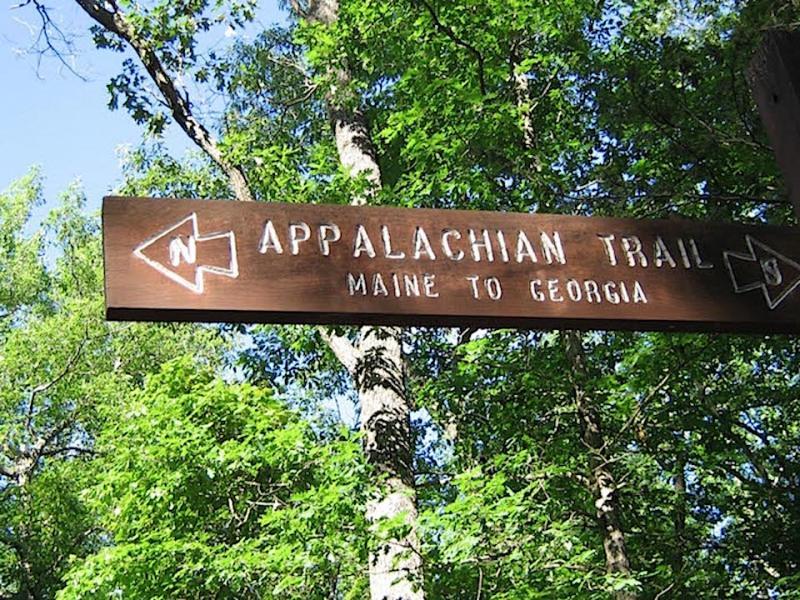
Groups are waiting on the U.S. Supreme Court's ruling on whether a natural gas pipeline can be built across the Appalachian National Scenic Trail where it exists on federally owned land/USDA file
Conservation groups are waiting with somewhat bated breath to see whether the U.S. Supreme Court will allow a natural gas pipeline to be built across the Appalachian National Scenic Trail in Virginia. The high court heard arguments last week into whether Atlantic Coast Pipeline could cross the A.T., and some observers were concerned that some justices were OK with that.
In December 2018 a unanimous U.S. Fourth Circuit Court of Appeals ruled that the U.S. Forest Service lacked the authority to OK construction of the Atlantic Coast natural gas pipeline across the Appalachian Trail, or any lands managed by the National Park Service, for that matter. Last June the company behind the pipeline, Dominion Energy's Atlantic Coast Pipeline, LLC, asked the U.S. Supreme Court to review the lower court's ruling.
The key isssue in play is whether the Mineral Leasing Act prohibits the U.S. government from authorizing a pipeline to cross the Appalachian Trail on federal land.
"The Mineral Leasing Act expressly prohibits the U.S. government from authorizing pipelines across federal lands in the National Park System. The Appalachian Trail is a unit of the National Park System. Accordingly, if the Appalachian Trail is land, then the Mineral Leasing Act prohibits pipeline construction on the federally owned portions of the Appalachian Trail," wrote Gillian Giannetti in a blog for the Natural Resources Defense Fund.
However, she added, there are other places where the pipeline could be constructed, as not all lands crossed by the A.T. are federally owned.
The Mineral Leasing Act "does not apply to state- or privately-owned portions of Park System units. Thus, while all of the Appalachian Trail is a unit of the Park System, the Mineral Leasing Act only excludes the federally owned portions from pipeline construction," she noted. "Over 50 pipelines currently cross the Appalachian Trail—none implicates a circumstance similar to the Atlantic Coast Pipeline. They instead cross the Appalachian Trail on state or private land, or on parcels that are owned by the federal government but where the crossing either predates federal ownership or congressional delegation of the Appalachian Trail as a unit of the National Park System."
At the National Parks Conservation Association, President Theresa Pierno shared Giannetti's views on the matter.
“Dominion Energy’s proposed Atlantic Coast Pipeline cannot circumvent the law, which clearly states that federal agencies do not have the authority to grant pipeline rights-of-way across lands within the National Park System—of which the Appalachian Trail is unequivocally a part. Only Congress has this authority, should it choose to exercise it," said Pierno. "Dominion’s legal argument hinges on the notion that the Appalachian Trail is somehow not land—a ludicrous, nonsensical position, and one that we hope the Court rejects.
"Just because the pipeline is going under the ground doesn’t mean it’s invisible. In addition to the impacts from the construction, building the pipeline as routed will mean maintaining a permanent clear-cut area above ground, harming the views and experience for every hiker on the trail," she said.



Comments
Actually, the original court decision was not based on the AT being consider a "unit" of the National Park System. It was based on the land being Federal land. NPS and other agencies have always interpreted the National Trails System Act as differentiating between the agency that "manages" the land, and the agency that "administers" the trail. This is based on Sec. 7. [16USC1246](a)(1)(A) of the act that says nothing in the act shall be deemed to transfer among federal agencies any management responsibilities. This section of the act was ignored in the original lower court ruling. During oral arguments at the Supreme Court it was brought up by Anthony Yang, from DOJ, near the end of the session, but not really explored by the justices or the lawyers.
Only two other National Trails are considered units of the NPS, the Potomac Heritage NST, and the Natchez Trace NST, because they have large amounts of land that is atually managed by the NPS. Other scenic and historic trails are not considered units, and most of them have very little, or no, NPS managed land, but many in the west cross large amounts of BLM and Forest Service managed land.